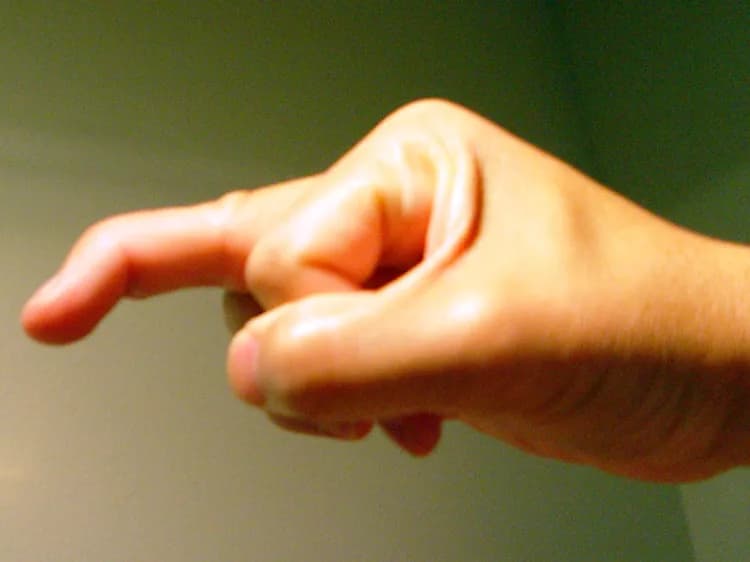What are the other Names for this Condition? (Also known as/Synonyms)
- Baseball Finger
- Hannan Finger
- Virgin Finger
What is Mallet Finger? (Definition/Background Information)
- Extensor tendons are the tendons in the hand and fingers that allow proper function/flexing of the fingers
- Mallet Finger is a common deformity of the finger that occurs, when the extensor tendon is stretched or torn. It is usually caused by a forceful blow to the fingertip. Any finger, including the thumb may be affected
- Men are generally more likely to develop Mallet Finger, than women
- Treatment associated with the condition includes both nonsurgical and surgical methods and the prognosis is good with proper treatment
Who gets Mallet Finger? (Age and Sex Distribution)
- Mallet Finger may occur in individuals of all ages, races, ethnic groups, or gender
- Men are more likely to develop Mallet Finger, than women
- Though, elderly women are also commonly affected
- Athletes, who are physically active, have the highest rate of occurrence
What are the Risk Factors for Mallet Finger? (Predisposing Factors)
- A common risk factor associated with Mallet Finger is individuals, who participate in sports, such as baseball or basketball
It is important to note that having a risk factor does not mean that one will get the condition. A risk factor increases ones chances of getting a condition compared to an individual without the risk factors. Some risk factors are more important than others.
Also, not having a risk factor does not mean that an individual will not get the condition. It is always important to discuss the effect of risk factors with your healthcare provider.
What are the Causes of Mallet Finger? (Etiology)
Participation in any rough or high-impact sport, such as football, volleyball, or baseball, can cause Mallet Finger.
What are the Signs and Symptoms of Mallet Finger?
Signs and symptoms of Mallet Finger include:
- Noticeable pain, tenderness, and swelling, of the distal joint of finger
- Redness surrounding the distal joint of finger
- Inability to perform full finger extension; difficulty bending the finger or joint
- Any finger or even the thumb may be affected
How is Mallet Finger Diagnosed?
Diagnostic methods that a physician may use to help diagnose Mallet Finger include:
- Physical examination: A thorough physical examination is important to assess the range of motion, strength, and stability of the fingers. Individuals are also expected to provide an explanation of the circumstances that caused the injury. In addition to this, a complete medical history can aid in arriving at a definitive diagnosis
- X-ray of finger: A physician may also order an x-ray, to evaluate the bones and joints of the finger
What are the possible Complications of Mallet Finger?
Complications of Mallet Finger could include:
- Prolonged and chronic pain in the finger
- Permanent deformity
How is Mallet Finger Treated?
Both nonsurgical and surgical treatment methods are available for Mallet Finger and these include:
- Application of ice/cold pack to the finger
- Any activity that aggravates the finger condition should be avoided. The physician may advise the individual to refrain from participating in any physical activities, till the pain or symptoms get better
- Complete immobilization of the finger with a cast may be required to restrict movement
- Non-steroidal anti-inflammatory oral medications, such as indomethacin and naproxen, may be used to treat Mallet Finger. These medications can help decrease the pain and swelling
- Individuals are likely to need physical therapy exercises after the cast is removed. The goals of these exercises are to strengthen the finger muscles, improve flexibility, and decrease stiffness. It may take several months for an individual to complete the physical therapy program and regain full strength and functionality
Surgical treatment methods include:
- Arthroscopy of the affected region: Arthroscopic surgery is a minimally invasive surgical procedure that is used to visualize, diagnose, and repair the finger joint, using small instruments. These instruments are inserted through a small incision made on the finger
How can Mallet Finger be Prevented?
There is no way to prevent Mallet Finger entirely. However, steps that may be taken to help decrease the risk of a Mallet Finger include:
- Individuals, who participate in any high-risk sports, such as football, should wear appropriate safety equipment, to help prevent the possibility of injuries
What is the Prognosis of Mallet Finger? (Outcomes/Resolutions)
- The long-term prognosis of Mallet Finger is usually good, in a majority of individuals.
- When treated properly, a high percentage of individuals regain their full strength and range of motion, in the finger
Additional and Relevant Useful Information for Mallet Finger:
The following DoveMed website link is a useful resource for additional information:
Related Articles
Test Your Knowledge
Asked by users
Related Centers
Related Specialties
Related Physicians
Related Procedures
Related Resources
Join DoveHubs
and connect with fellow professionals


0 Comments
Please log in to post a comment.